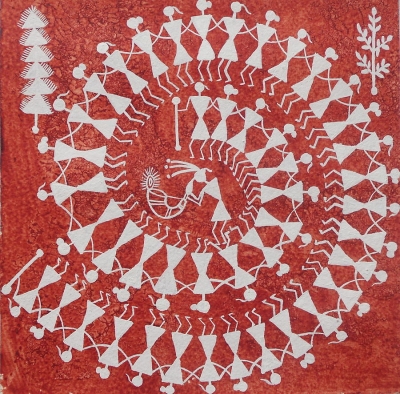
This tribal art form from Maharashtra is used a medium by the tribe to convey their customs and lifestyle. It is traditionally painted in the form of a mural and has motifs such as stick human figures, markets, and animals. Conventionally, the paintings are made using ground rice and not paint. The consistent repetition of motifs and patterns stand out.
Collection of tribal arts has historically been inspired by the Western myth of the “noble savage”, and lack of cultural context has been a challenge with the Western mainstream public’s perception of tribal arts. In the 19th century, non-western art was not seen by mainstream Western art professional as being as art at all. The art world perception of tribal arts is becoming less paternalistic, as indigenous and non-indigenous advocates have struggled for more objective scholarship of tribal art. Before Post-Modernism emerged in the 1960s, art critics approached tribal arts from a purely formalist approach, that is, responding only to the visual elements of the work and disregarding historical context, symbolism, or the artist’s intention.
Major exhibitions of tribal arts in the late 19th through mid-20th centuries exposed the Western art world to non-Western art. Major exhibitions included the Museum of Modern Art’s 1935 Africa Negro Art and 1941 Indian Art of the United States. Exposure to tribal arts provide inspiration to many modern artists, notably Expressionists, Cubists, and Surrealists, notably Surrealist Max Ernst. Cubist painter, Pablo Picasso stated that “primitive sculpture has never been surpassed.”
Credit : Cultural Anthropology
Picture Credit : Google



